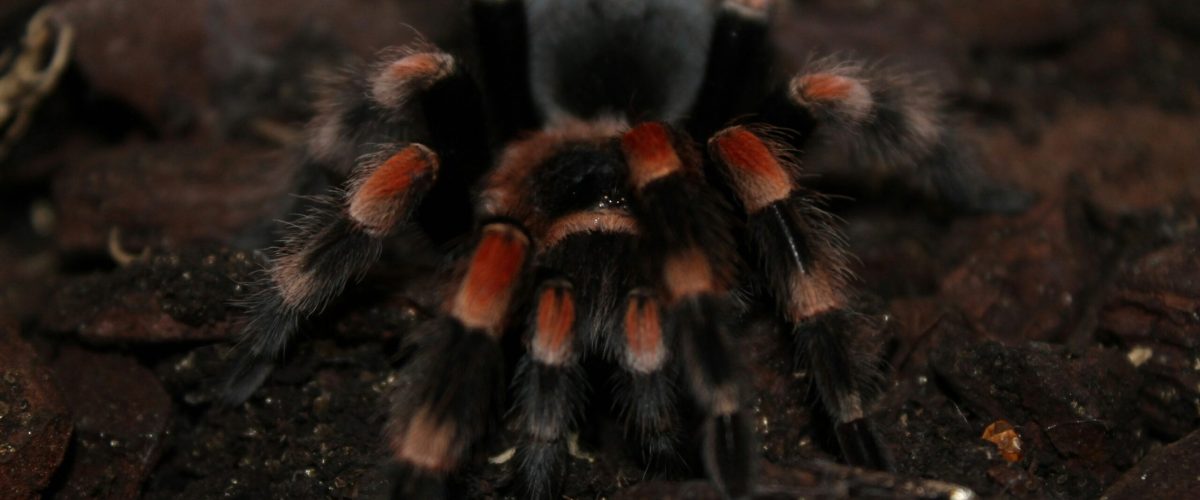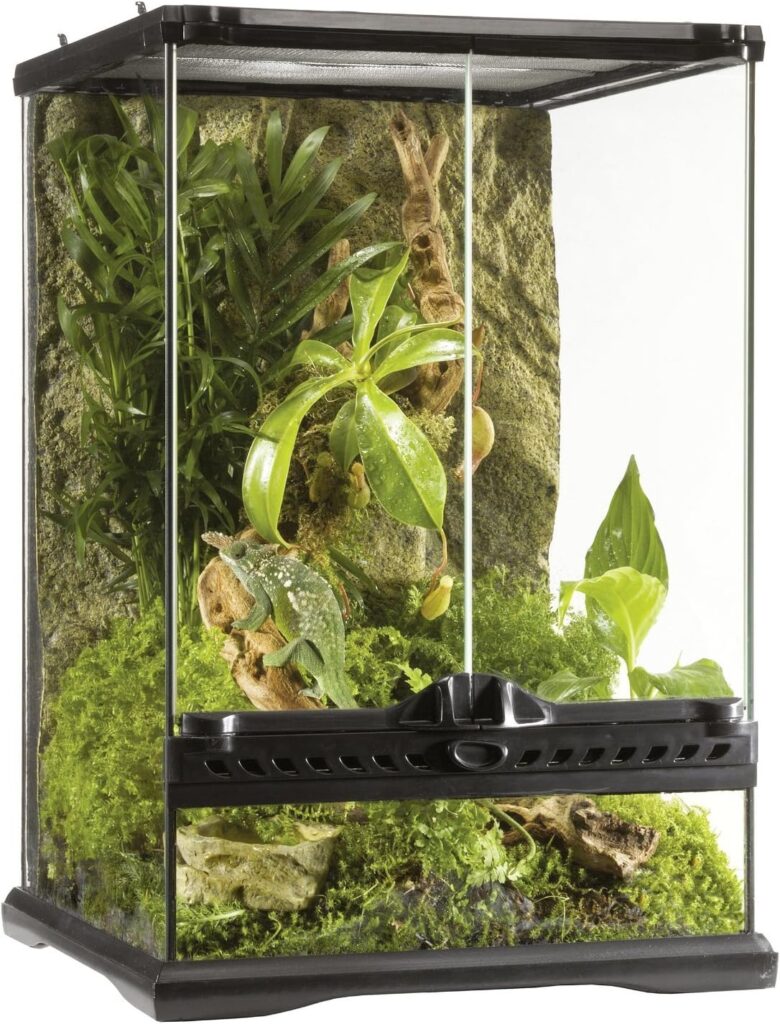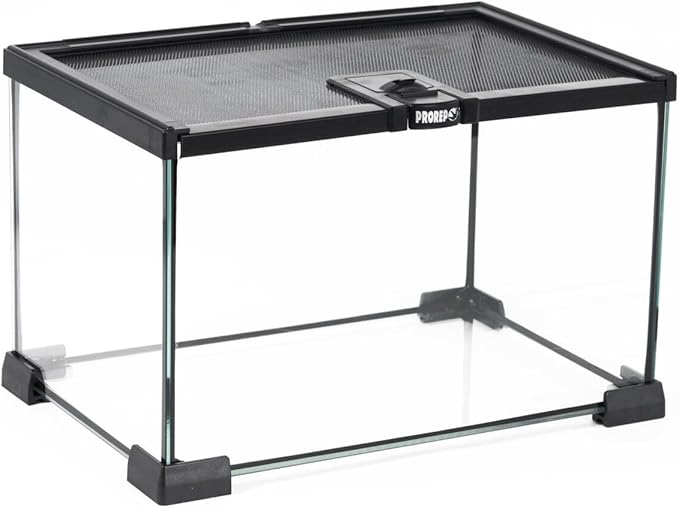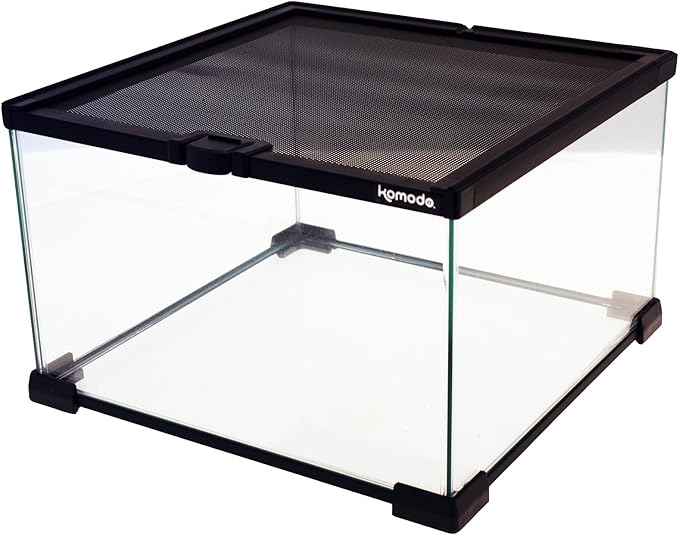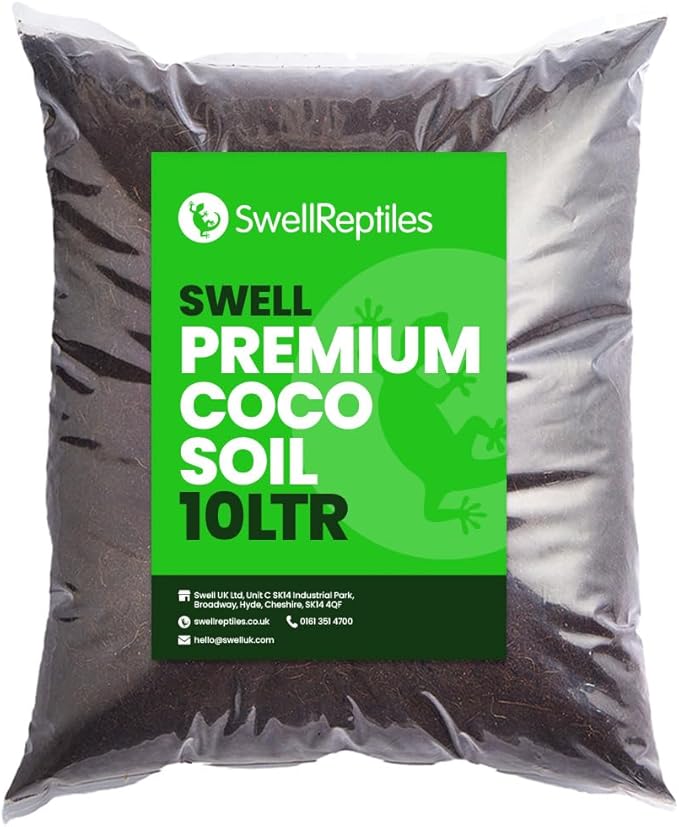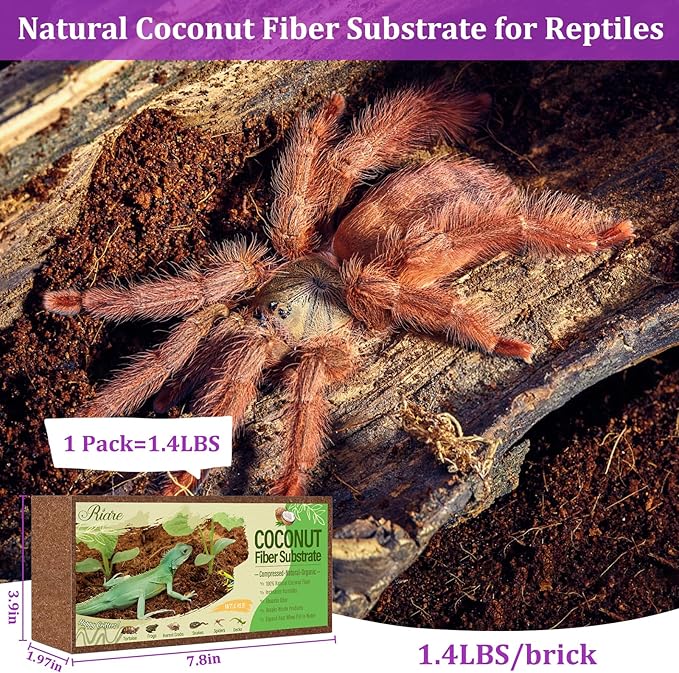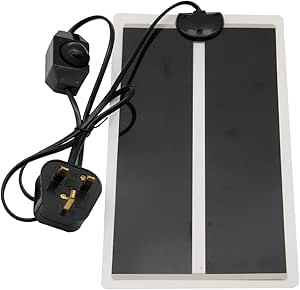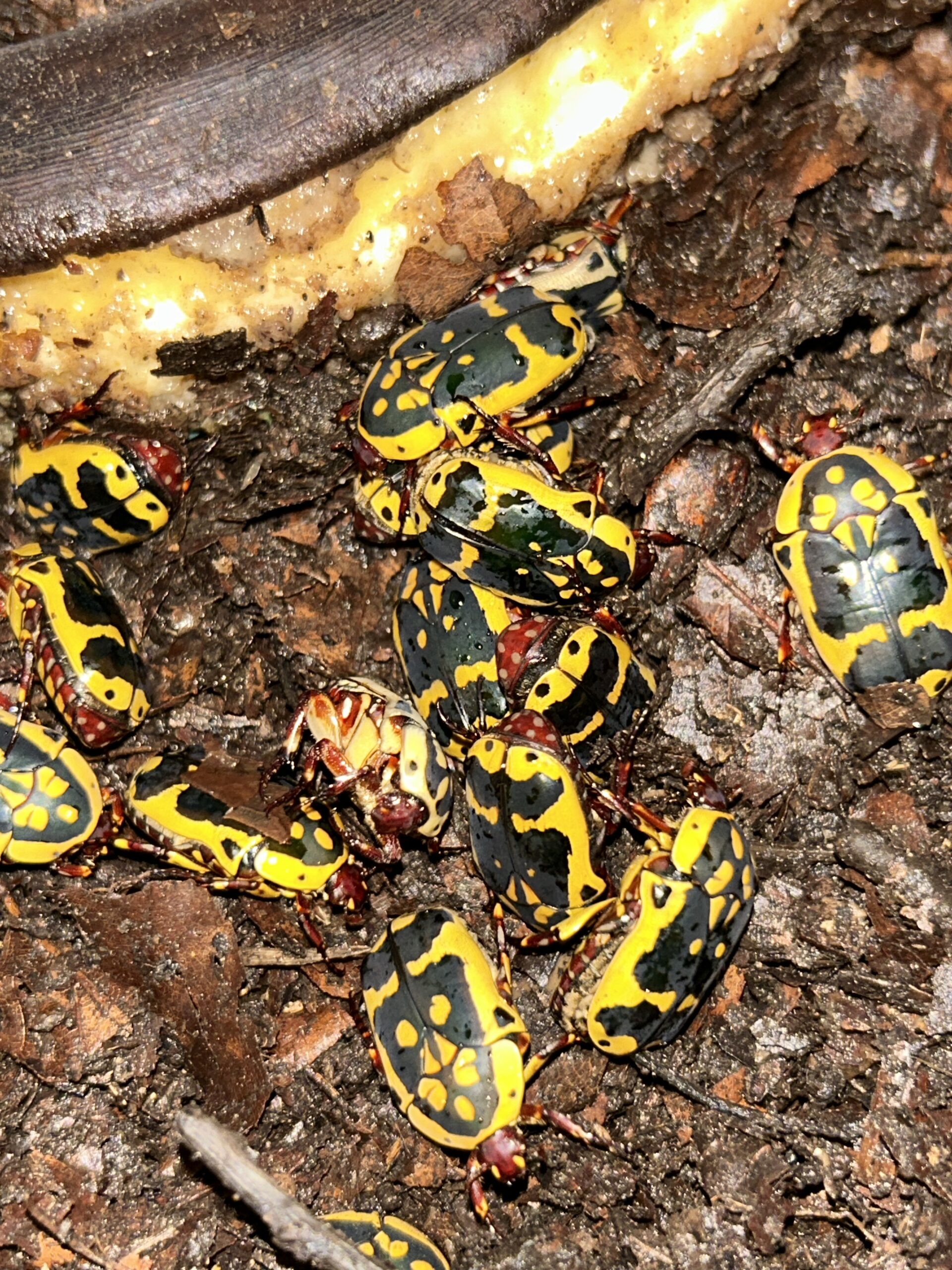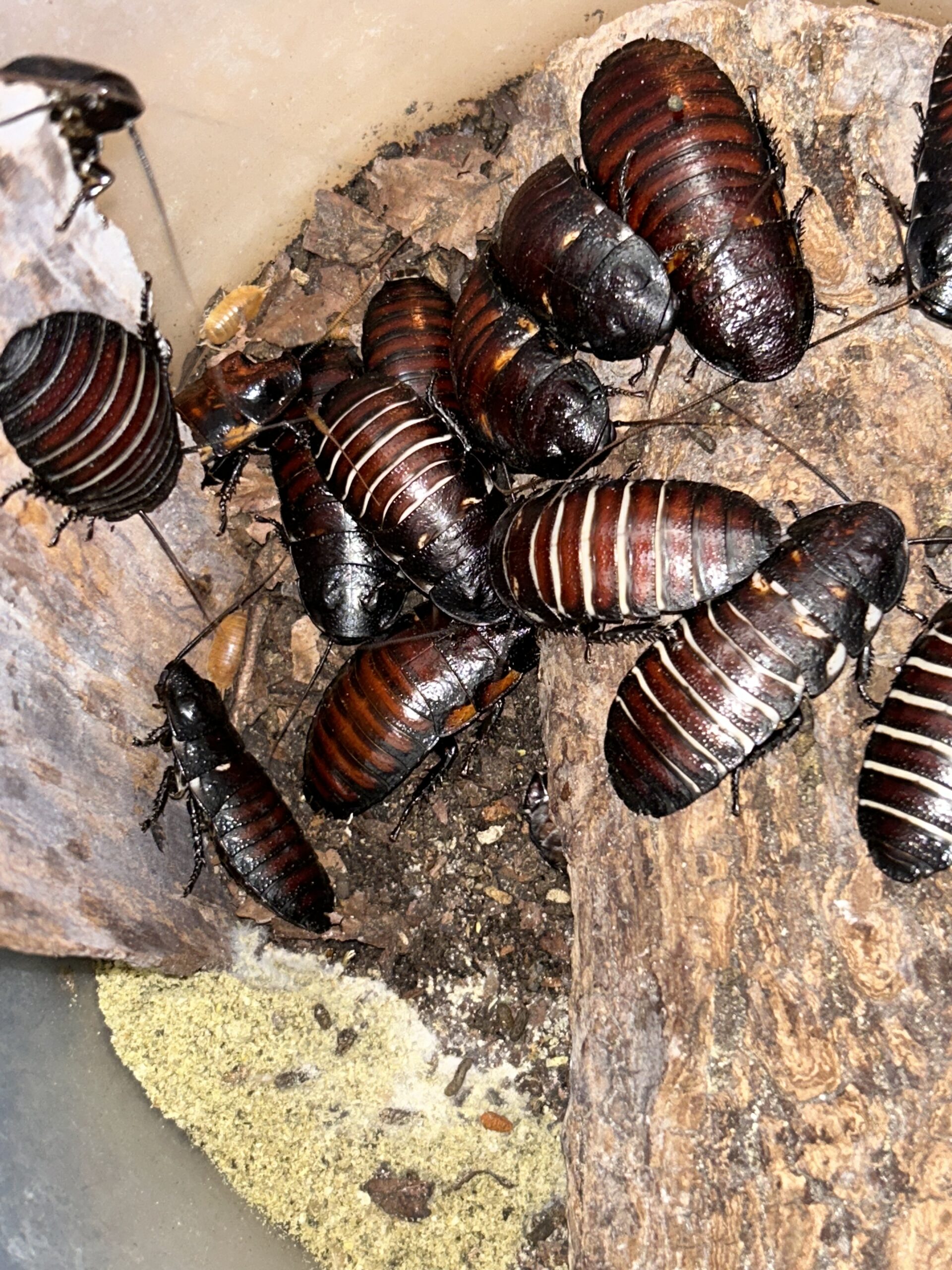Terrarium: The Home for Your Tarantula
A terrarium is essential for housing your pet tarantula, as it serves as both its habitat and a microenvironment that closely resembles its natural surroundings. When selecting an appropriate terrarium, there are several crucial factors to consider, including size, ventilation, and substrate choices. The size of the terrarium is particularly important; typically, a minimum of 5 to 10 gallons is recommended for most species. However, larger tarantulas or those that require more space for burrowing may necessitate a larger enclosure.
Below are some great enclosures to use for your first tarantula.
Choose the right substrate for you. The benefits are that they hold plenty of moisture to add humidity to your enclosure. All of the varieties below are all very good, it is just personal preference, so there is no right or wrong one to get.
Heating Equipment: Maintaining the Right Temperature
Temperature control is also pivotal. Maintaining a stable temperature between 75°F to 85°F is typical for most tarantula species. A heat source such as a heat mat may be necessary, but it is crucial to ensure that there are no direct hot spots within the terrarium that could potentially harm your pet. By properly setting up tarantula enclosures, you can create a safe and enjoyable living environment for your arachnid companion.
Maintaining the right temperature is crucial for the health and well-being of your pet tarantula. Tarantulas are ectothermic creatures, meaning their body temperature is regulated by their environment. Thus, providing a suitable heating mechanism within the tarantula enclosures is essential. Among the various types of heating equipment available for terrariums, heat mats, incandescent bulbs, and ceramic heat emitters are commonly used. Each of these options has distinct characteristics that cater to different needs.
Tarantulas often do well at room temperatures however, if you live in colder locations, then a heating device would be recommended.
Heat mats, which are often placed on one of the side of the terrarium, provide consistent warmth and can effectively raise the substrate temperature. When using heat mats, ensure that they cover only a portion of the enclosure’s floor to allow your tarantula to seek cooler areas if necessary. This method promotes a thermal gradient, enabling your pet tarantula to regulate its body temperature naturally by moving between warmer and cooler zones within the cage.
Incandescent bulbs can also offer an effective heating solution. By positioning the bulb above the terrarium, you create a basking area for your tarantula. It is vital to ensure that the bulb is adequately shielded to avoid burns, and the distance from the enclosure must be monitored to prevent overheating. Furthermore, it is important to use a dimmer or adjustable fixture to control light and heat output effectively.
Ceramic heat emitters provide a consistent heat source without emitting light, making them suitable for nocturnal tarantulas. Like incandescent bulbs, they should be placed in a secure fixture, allowing for temperature monitoring. In all cases, using a reliable thermometer is indispensable for checking temperatures accurately within the terrarium. Adhering to these guidelines will help create an optimal environment for your pet tarantula, ultimately promoting its health and longevity.
Humidity Control: Keeping It Just Right
Maintaining the proper humidity level in a tarantula enclosure is vital for the health and well-being of your pet tarantula. Humidity affects various physiological processes in these arachnids, including molting, hydration, and overall behavior. Different species of tarantulas have varied humidity requirements; therefore, it is crucial to understand the specific needs of the species you own.
One effective way to monitor humidity levels is by utilizing a hygrometer. This device accurately measures humidity, providing you with real-time information as to whether adjustments need to be made. Most pet stores carry hygrometers, and they can easily be integrated into any terrarium setup. Maintaining the relative humidity between 50% to 70% is generally recommended for many terrestrial tarantula species, while other species, especially those originating from tropical environments, may require up to 80% humidity.
There are several methods to achieve optimal humidity levels within tarantula enclosures. Misting systems can be an efficient way to keep humidity balanced, allowing for a fine mist to replenish moisture without saturating the substrate. However, it is important to mist only as needed, as excessive moisture can lead to mold growth and respiratory issues for the tarantula. Water dishes are also essential; they provide a source of hydration that can directly impact maintaining the humidity level. The size and accessibility of the water dish should be considered to ensure it suits your tarantula’s needs.
When adjusting humidity levels, substrate choice plays a key role. Some substrates, like coconut fiber or peat moss, can help retain moisture effectively, while others may dry out quickly. Additionally, the design of your terrarium can influence humidity retention. Incorporating features like live plants or a small water feature can enhance moisture levels and create a more natural environment for your pet tarantula. In conclusion, properly managing humidity within your tarantula’s enclosure is essential for its overall health and development. By utilizing the aforementioned tools and techniques, you can create a thriving habitat for your beloved tarantula.
Feeding Supplies: Nutrition and Care
Providing the appropriate nutrition for your pet tarantula is a vital aspect of ensuring its health and longevity. Tarantulas are carnivorous arachnids, primarily feeding on insects in captivity. Common food sources include crickets, mealworms, and roaches. Each of these options offers essential nutrients that can contribute significantly to your tarantula’s overall well-being. Crickets are particularly favored due to their availability and nutritional content, while mealworms can serve as an occasional treat. Roaches are another excellent choice, as they are nutritious and can be bred easily at home.
To facilitate the feeding process, certain tools are invaluable. Feeding tongs, for example, allow owners to safely deliver food items to the tarantula’s enclosure without risking injury to either the human or the spider. These tongs also help prevent the tarantula from associating human presence with danger during feeding times. A shallow water dish is also necessary to provide hydration. Make sure the dish has low sides so your pet can easily access the water, and remember to refresh it regularly to maintain cleanliness and prevent stagnation.
Feeding frequency and portion sizes are equally important aspects of pet tarantula care. Generally, adult tarantulas require feeding once every week or two, while younger or growing spiders might need food every few days. A good rule of thumb is to offer prey that is about the same size as the tarantula’s abdomen. Observing your tarantula’s behaviour during feeding can provide insights into its appetite; a healthy tarantula will actively pursue its food. Additionally, recognising signs of reluctance to eat or excess uneaten food can indicate potential health issues. It is crucial to monitor these feeding habits and adjust accordingly to ensure your pet tarantula remains happy and healthy.

